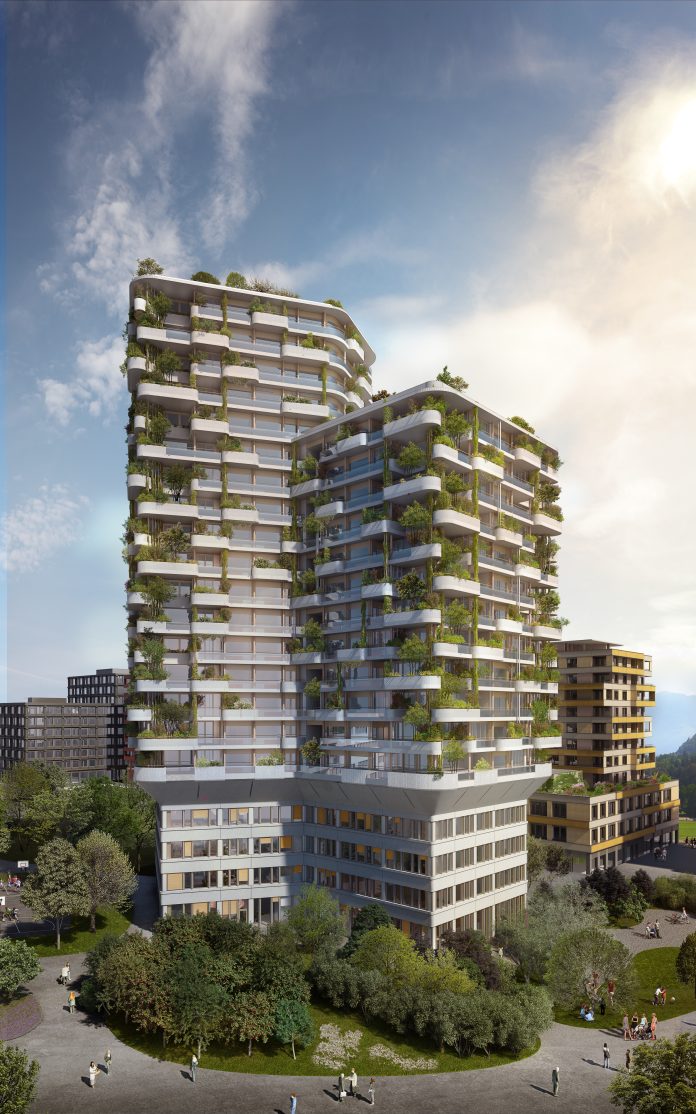BIM can help drive down carbon emissions in construction and support sustainable practices in myriad ways, from better planning to less waste
While much of the AEC industry’s decarbonisation focus has been placed on the design and operation stages, reducing carbon emissions in construction is just as important. The carbon created during a building’s construction – called embodied carbon – contributes 11% of all carbon emissions generated by the sector.
However, this embodied carbon can also be more difficult to identify and reduce. BIM can help with this issue, enabling the consideration of carbon during the construction phase so that better choices can be made.
What is embodied carbon?
Embodied carbon refers to the emissions associated with the materials and construction processes used throughout a building’s or asset’s lifecycle.
This can therefore refer to the carbon generated during the extraction of materials, transportation of raw materials to a manufacturer, the manufacturing process and transportation to site, as well as the emissions created during construction, operation, refurbishment, demolition and disposal.
Essentially, before a building has been used, it has already contributed to carbon emissions – and once in use, the embodied carbon cannot be reduced.
As operational carbon decreases, the proportion of carbon emissions attributed to embodied carbon is set to rise significantly.
Reducing carbon emissions in construction
To reduce this figure, the entire construction process as well as the operational aspects must be considered if decarbonisation targets are to be met.
This way, materials, product selection and construction methods which are low carbon or net zero can be chosen instead of higher-emitting alternatives.
Digital technologies like BIM provide an opportunity for the AEC industry to improve resource and energy efficiency for more sustainable development. Whether for renovation or new builds, BIM enables improved decision-making for both buildings and infrastructure assets across the entire asset lifecycle.
In terms of sustainability, these decisions mean that material usage is optimised, wastage is reduced, asset utilisation is improved and fewer resources are consumed during construction and operation.
How BIM supports sustainable construction
The main benefit of BIM during the construction phase is the elimination of uncertainties or interpretation errors that lead to increased emissions and wasted materials through delays and rework. For example, prefabrication and modular construction can help reduce the emissions generated on site through faster construction and less material waste.
However, prefabrication relies heavily on BIM thanks to the automated production processes used, which greatly reduces carbon emissions in construction.
As well as savings during manufacture, other construction variants can be tested for suitability with BIM. For example, using precast hollowcore slabs can provide both concrete and steel reinforcement savings, as well as less energy consumption, waste and emissions during transport to site. With BIM, these slabs could be placed in the model and objectively analysed for their suitability.
BIM can also help avoid waste on site through better planning and management. For example, the construction sequence can be simulated to ensure the structure is buildable before changes become costly and waste precious resources. This can be done for traditional construction, or for modular or prefabricated methods. Similarly, modular or prefabricated component assembly can also be checked prior to installation on site.
Being able to visualise the construction site layout and plan equipment placement (such as cranes), access, and storage can also help avoid material waste during construction. The extra planning and simulation are helpful not just for preserving materials but also for avoiding the additional energy required and emissions and pollution generated by projects that overrun.
Green construction with BIM
BIM is useful for more than just design – the possibilities for using BIM to improve sustainability on site are many and varied. For more inspiration as to how BIM can help achieve sustainable construction, download the white paper Green BIM – Digital Solutions for Sustainability.
ALLPLAN
*Please note: This is a commercial profile














